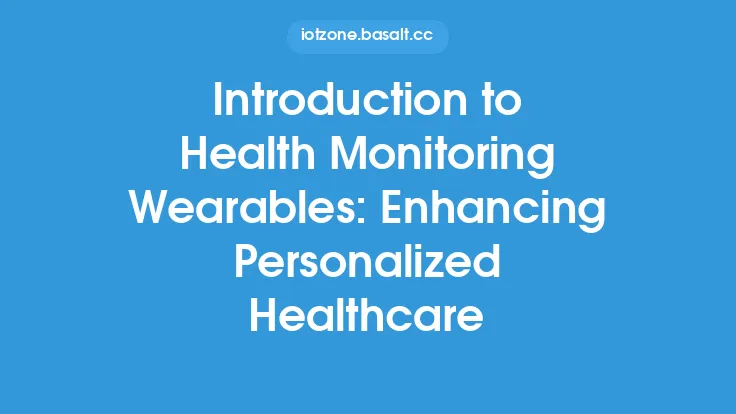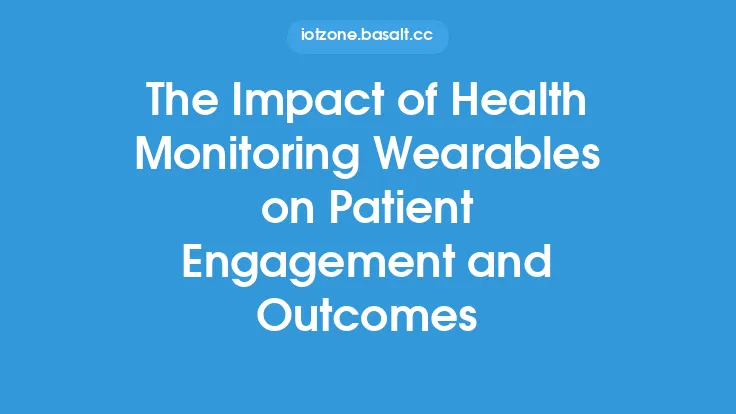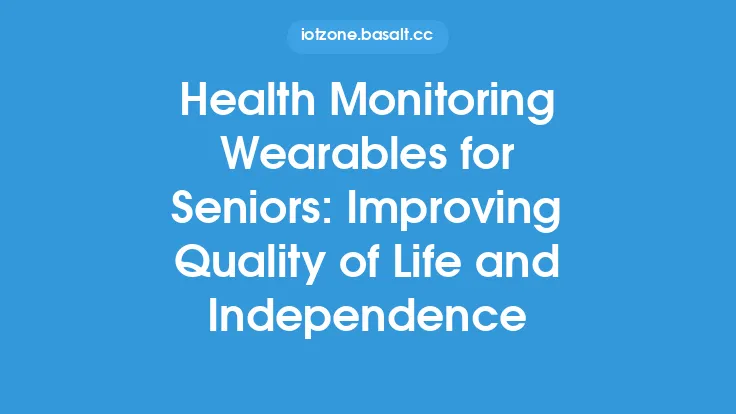The integration of health monitoring wearables into telemedicine has been a significant development in the healthcare industry. These wearable devices, which can track various physiological parameters such as heart rate, blood pressure, and oxygen saturation, have enabled remote patient monitoring and improved the delivery of healthcare services. With the advancement of technology, health monitoring wearables have become more sophisticated, allowing for real-time data transmission and analysis, which has revolutionized the field of telemedicine.
Technical Overview of Health Monitoring Wearables
Health monitoring wearables are equipped with sensors and algorithms that enable them to track various physiological parameters. These sensors can include accelerometers, gyroscopes, and electrocardiogram (ECG) sensors, which can detect changes in movement, orientation, and heart activity. The data collected by these sensors is then transmitted to a cloud-based platform or a mobile device, where it can be analyzed and interpreted by healthcare professionals. Some health monitoring wearables also have built-in GPS and cellular connectivity, allowing for real-time location tracking and communication with healthcare providers.
Applications of Health Monitoring Wearables in Telemedicine
Health monitoring wearables have a wide range of applications in telemedicine, including remote patient monitoring, chronic disease management, and preventive care. For example, patients with heart failure can wear a device that tracks their heart rate and rhythm, allowing healthcare providers to detect any abnormalities and intervene early. Similarly, patients with diabetes can wear a device that tracks their blood glucose levels, enabling healthcare providers to adjust their treatment plans accordingly. Health monitoring wearables can also be used to track physical activity, sleep patterns, and nutrition, providing healthcare providers with a comprehensive picture of a patient's health.
Benefits of Health Monitoring Wearables in Telemedicine
The integration of health monitoring wearables into telemedicine has several benefits, including improved patient outcomes, reduced healthcare costs, and enhanced patient engagement. By enabling remote patient monitoring, health monitoring wearables can help reduce hospital readmissions and improve patient adherence to treatment plans. Additionally, health monitoring wearables can provide healthcare providers with real-time data, enabling them to make more informed decisions and intervene early in case of any abnormalities. Health monitoring wearables can also empower patients to take a more active role in their healthcare, by providing them with personalized feedback and insights into their health.
Challenges and Limitations of Health Monitoring Wearables in Telemedicine
Despite the benefits of health monitoring wearables in telemedicine, there are several challenges and limitations that need to be addressed. One of the main challenges is ensuring the accuracy and reliability of the data collected by health monitoring wearables. This requires careful calibration and validation of the devices, as well as regular software updates and maintenance. Another challenge is ensuring the security and privacy of patient data, which requires robust encryption and secure data storage protocols. Additionally, health monitoring wearables may not be suitable for all patients, particularly those with complex medical conditions or limited mobility.
Future Directions of Health Monitoring Wearables in Telemedicine
The future of health monitoring wearables in telemedicine is exciting and promising. With the advancement of technology, we can expect to see more sophisticated and accurate health monitoring wearables that can track a wide range of physiological parameters. We can also expect to see greater integration of health monitoring wearables with electronic health records (EHRs) and other healthcare systems, enabling seamless data exchange and analysis. Additionally, the use of artificial intelligence (AI) and machine learning (ML) algorithms can help analyze the data collected by health monitoring wearables, providing healthcare providers with predictive insights and personalized recommendations. Overall, the integration of health monitoring wearables into telemedicine has the potential to revolutionize the delivery of healthcare services, improving patient outcomes, reducing healthcare costs, and enhancing patient engagement.





